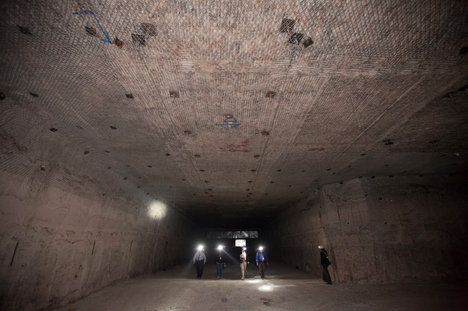(p. C2) In his chilling new book, “Midnight in Chernobyl,” the journalist Adam Higginbotham shows how an almost fanatical compulsion for secrecy among the Soviet Union’s governing elite was part of what made the accident not just cataclysmic but so likely in the first place. Interviewing eyewitnesses and consulting declassified archives — an official record that was frustratingly meager when it came to certain details and, Higginbotham says, couldn’t always be trusted — he reconstructs the disaster from the ground up, recounting the prelude to it as well as its aftermath. The result is superb, enthralling and necessarily terrifying.
. . .
Higginbotham describes young workers who were promoted swiftly to positions of terrific responsibility. In an especially glaring example of entrenched cronyism, the Communist Party elevated an ideologically copacetic electrical engineer to the position of deputy plant director at Chernobyl: To make up for a total lack of experience with atomic energy, he took a correspondence course in nuclear physics.
Even more egregious than some personnel decisions were the structural problems built into the plant itself. Most fateful for Chernobyl was the baffling design of a crucial safety feature: control rods that could be lowered into the reactor core to slow down the process of nuclear fission. The rods contained boron carbide, which hampered reactivity, but the Soviets decided to tip them in graphite, which facilitated reactivity; it was a bid to save energy, and therefore money, by lessening the rods’ moderating effect. Higginbotham calls it “an absurd and chilling inversion in the role of a safety device,” likening it to wiring a car so that slamming the brakes would make it accelerate.
. . .
. . . Chernobyl exposed the untenable fissures in the Soviet system and hastened its collapse; the accident also encouraged Mikhail Gorbachev to pursue drastic reforms with even more zeal.
Higginbotham observes that the plant was run like the Soviet state writ large — with individuals expected to carry out commands from on high with an automaton’s acquiescence. At the same time, when it came time to assess responsibility for the disaster, any collectivist fellow feeling evaporated, as the ensuing show trials insistently scapegoated a few individuals (some of them already dead) in a desperate attempt to keep a crumbling system intact.
The accident also decimated international confidence in nuclear power, and a number of countries halted their own programs — for a time, that is. Global warming has made the awesome potential of the atom a source of hope again and, according to some advocates, an urgent necessity; besides, as Higginbotham points out, nuclear power, from a statistical standpoint, is safer than the competing alternatives, including wind.
For the full review, see:
Jennifer Szalai. “BOOKS OF THE TIMES; Nuclear Disaster In Chilling Detail.” The New York Times (Thursday, Feb. 7, 2019): C2.
(Note: ellipses added.)
(Note: the online version of the review has the date Feb. 6, 2019, and has the title “BOOKS OF THE TIMES; An Enthralling and Terrifying History of the Nuclear Meltdown at Chernobyl.”)
The book under review, is:
Higginbotham, Adam. Midnight in Chernobyl: The Untold Story of the World’s Greatest Nuclear Disaster. New York: Simon & Schuster, 2019.


